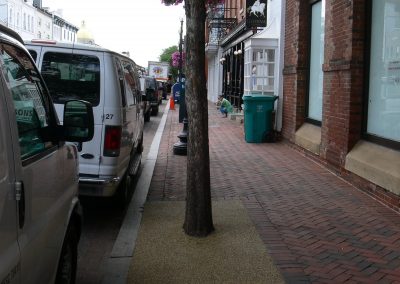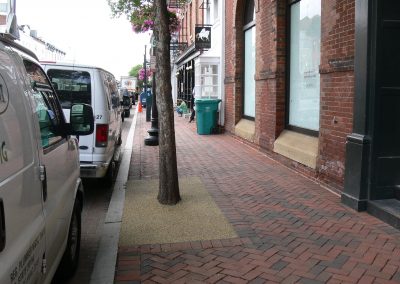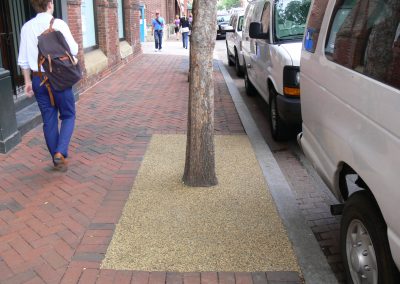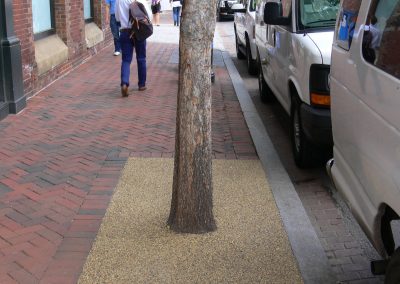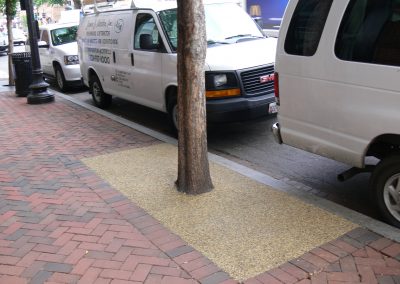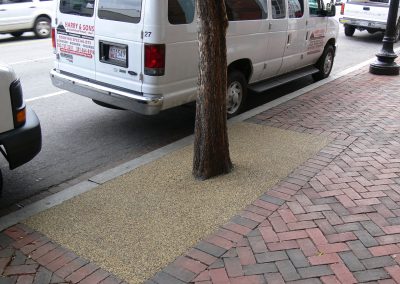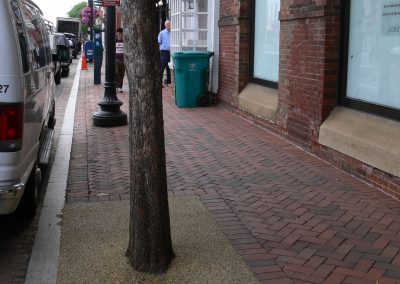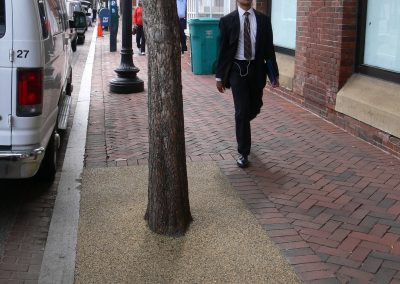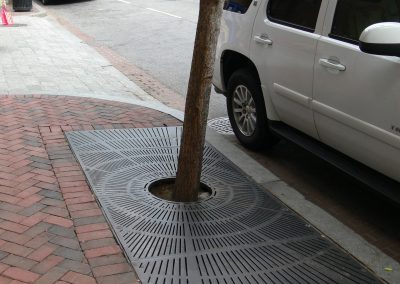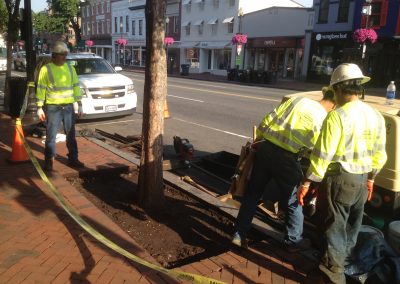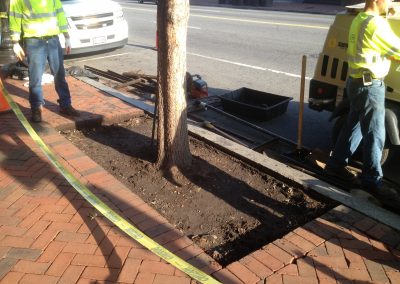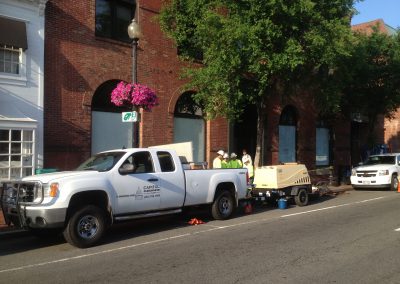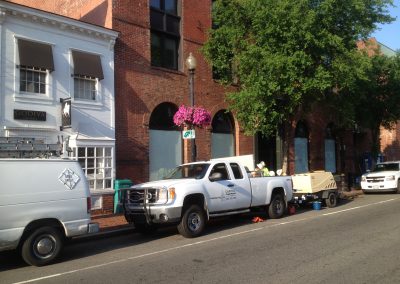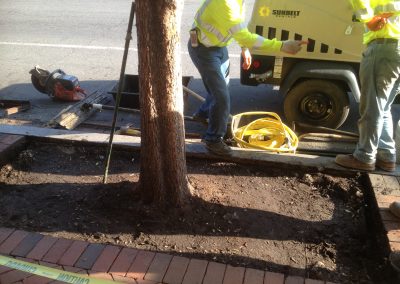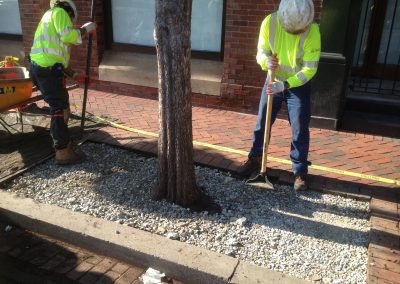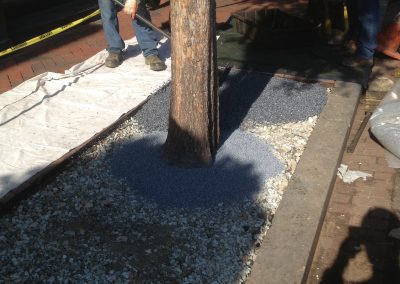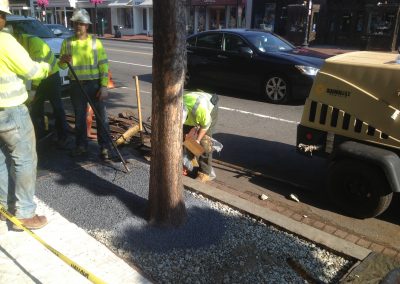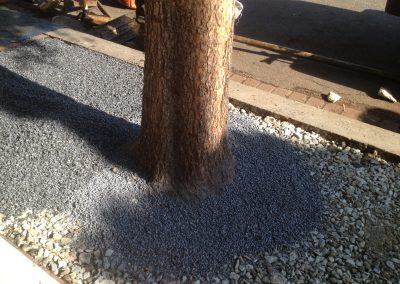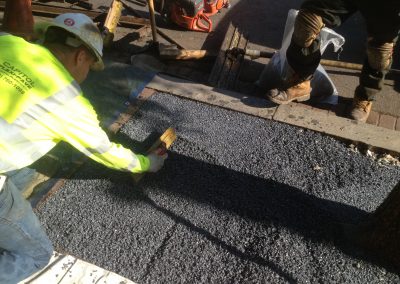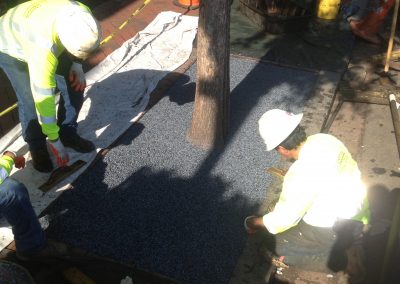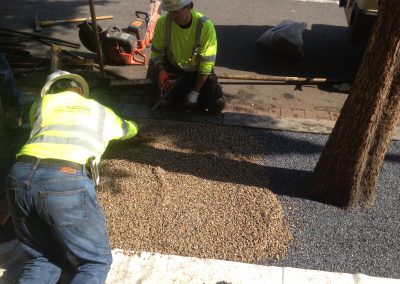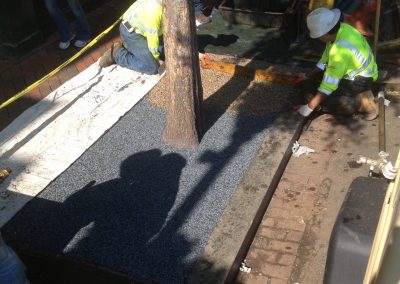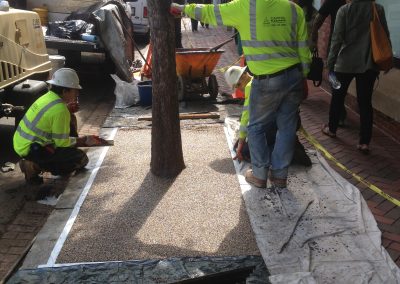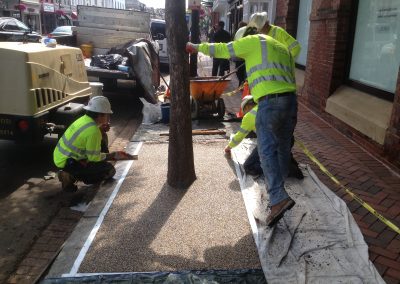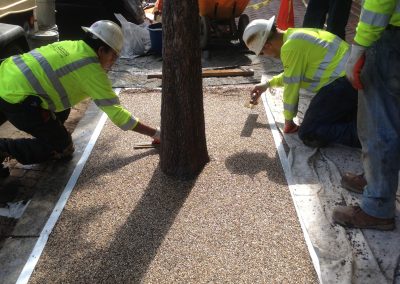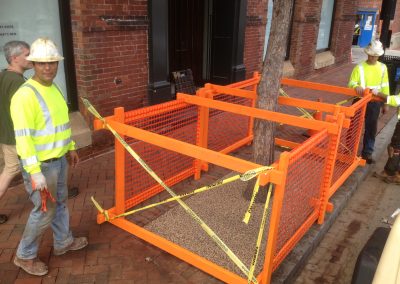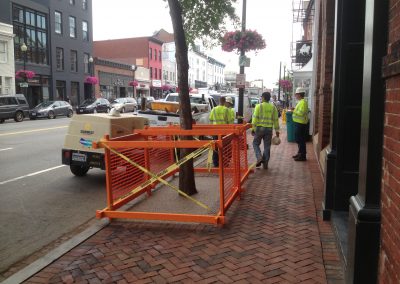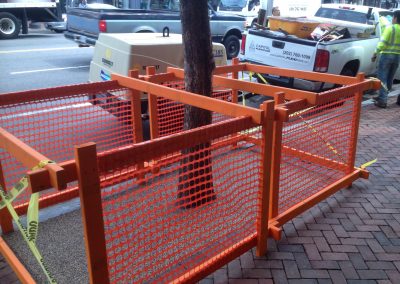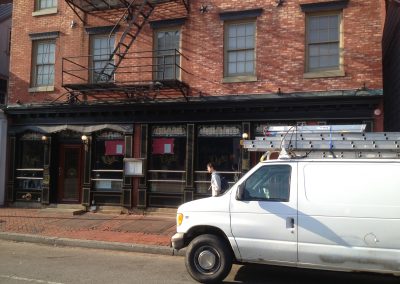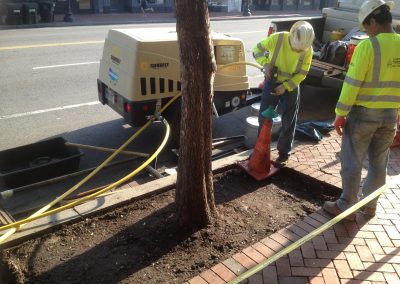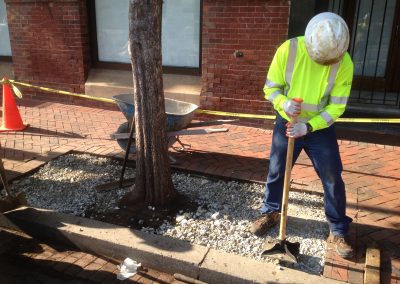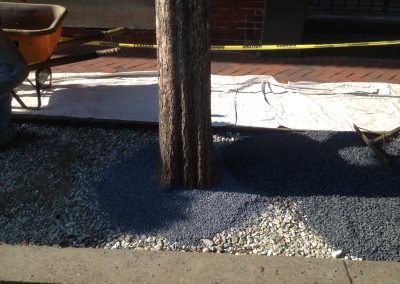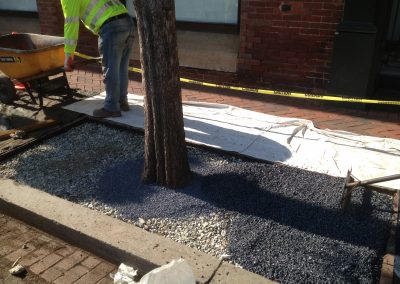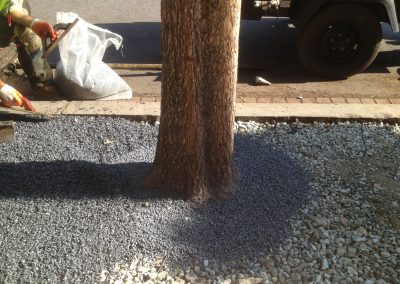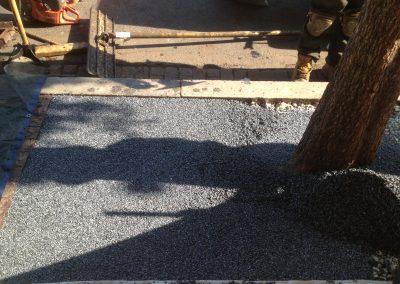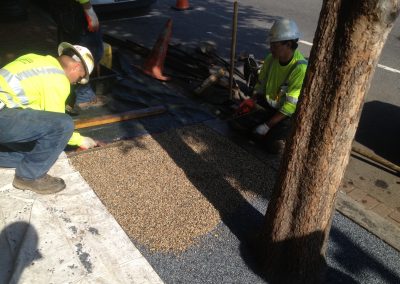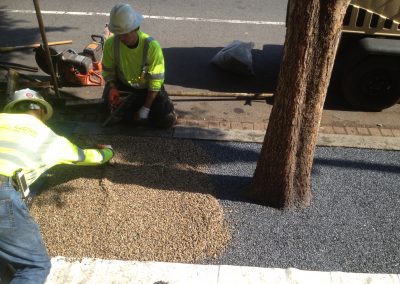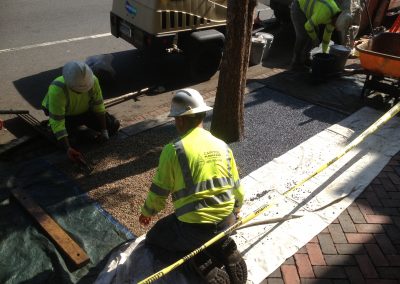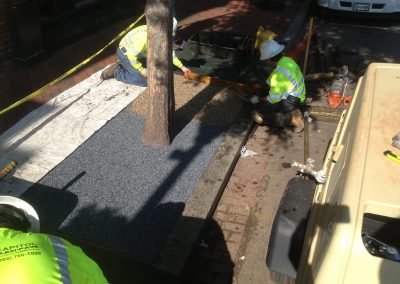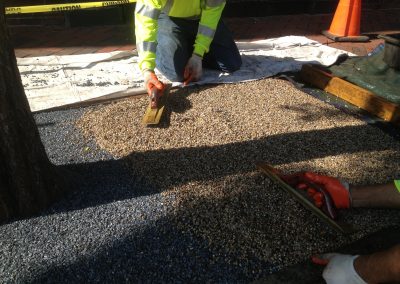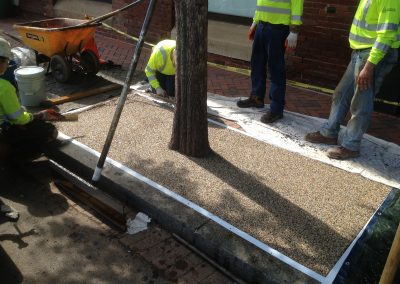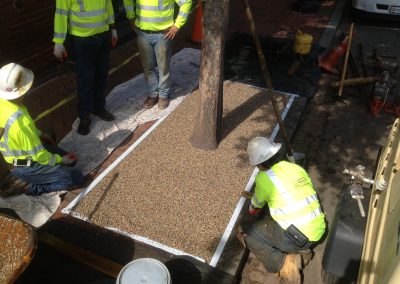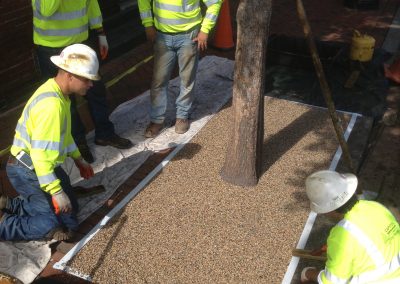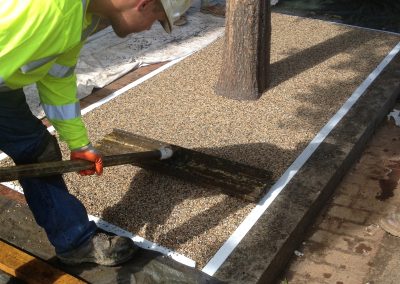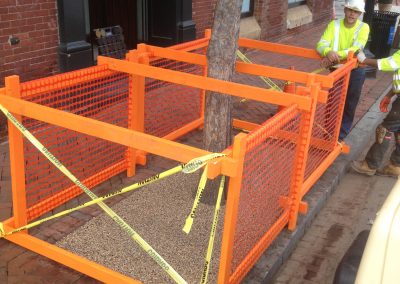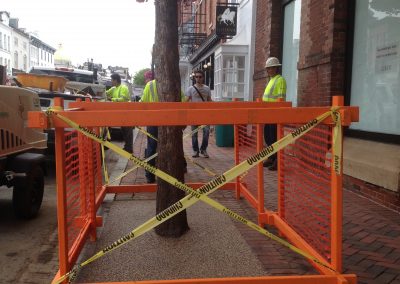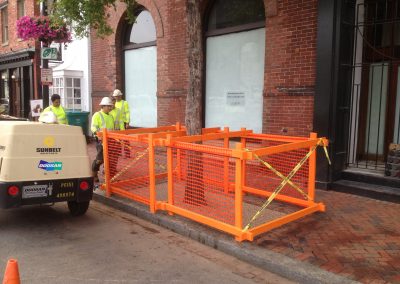Georgetown Tree Surrounds 2
Clyde’s Restaraunt is scheduled to be the latest storefront to receive Flexi-Pave tree surrounds from the Georgetown BID. Read more about it an article in The Georgetowner, as well as on Georgetown BID’s website.
It is easy to understand why urban trees struggle to survive. Urban tree surrounds and tree pits are problematic at best. Whereas forest trees thrive due to having uncompacted biologically active soils, amble soil moisture, amble nutrients and protection from the elements due to their large numbers, but urban trees lack in every area. They have restricted root zones, compacted soils, a majority of their roots zones covered with impervious surfaces, lack of moisture, lack of available nutrients, lack of biological activity and a lack of protection from the elements, not to mention the physical abuse they endure from pedestrians and vehicular traffic.
Over the years many solutions have been tried to deal with the street tree problem. Bare soil becomes overgrown with weeds, or heavily compacted and impervious to water and oxygen from repeated foot traffic. Short fences cause tripping hazards for pedestrians. Timbers are tripping hazards, then they deteriorate and neighbors tend to fill in the planters with additional soil, causing girdling roots to form. Bricks become dislodged into tripping hazards or projectiles during times of civil unrest, Granite cobbles move and become dislodged as well. Cast iron tree grates become filled with trash and cigarette butts, then they girdle the tree trunks when their openings are not cut larger each year.
But things are different now. A new solution has been in development for the past 15 years and is now available to solve this urban challenge. Flexi-Pave is currently being used on a widespread basis throughout the country as a solution for municipal tree pits. Cities like New York, Chicago, Washington DC, Miami, Key West and large scale property owners like The Walt Disney Company are systematically replacing their tree surrounds with Flexi-Pave as fast as they can.
Why is this, and what makes Flexi-Pave different than previous fixes? The difference is that Flexi-Pave is a porous flexible paving material that allows water and air to pass through to the root zone, but it prevents soil compaction from daily pedestrian traffic. Air and water are critical for trees to survive, but soil compaction is detrimental to root development.
And where prior versions of porous paving became clogged with fines and required extensive vacuuming to maintain their porosity, Flexi-pave is self-cleaning due to it’s dynamic void capacity and flexible nature, so it does’t require vacuuming. This is why the governing agencies consider Flexi-Pave to be “invisible” to stormwater as a truly long term porous surface.
Flexi-Pave has other benefits as well. A biofil of microbes lives inside the 19-23% void space and these microbes feed on contaminants like nitrates and orthophosphates which are found in the first flush of stormwater during a rain event. These contaminants traditionally have flowed into storm drains, then into our bodies of water causing eutrophication, or dead zones where aquatic life cannot survive. The Chesapeake Bay, for instance is struggling with eutrophication from all the years of being polluted. But as this storm water flows into the Flexi-Pave, it is cleaned of these contaminants by up to 86%, studies show.
The latest to join this movement are the DDOT, the Georgetown Business Improvement District and the Urban Forestry Administration who have joined forces to begin a tree surround replacement program in Georgetown and throughout the city. The Georgetown BID has installed several Flexi-Pave tree surrounds along M Street Northwest and is attempting to establish a standard Georgetown Flexi-Pave color. Plaques are installed at the base of some of the tree surrounds explaining what this new material is so feedback from residents and visitors can be monitored. Read more about it in this article from The Georgetowner. This latest tree surround is located in front of the Godiva store and Clydes.
Elsewhere in the District of Columbia, sidewalks and tree surrounds are being replaced through a city-wide sidewalk replacement program funded by DDOT and overseen by UFA. The goal is two-fold. To improve tree health by increasing the size of standard 4′x10′ tree pits, and secondly to eliminate the constant repair and replacing of cracking concrete sidewalks adjacent to large trees.

